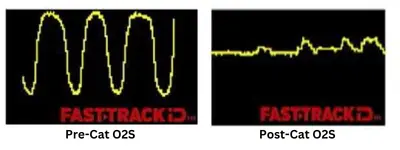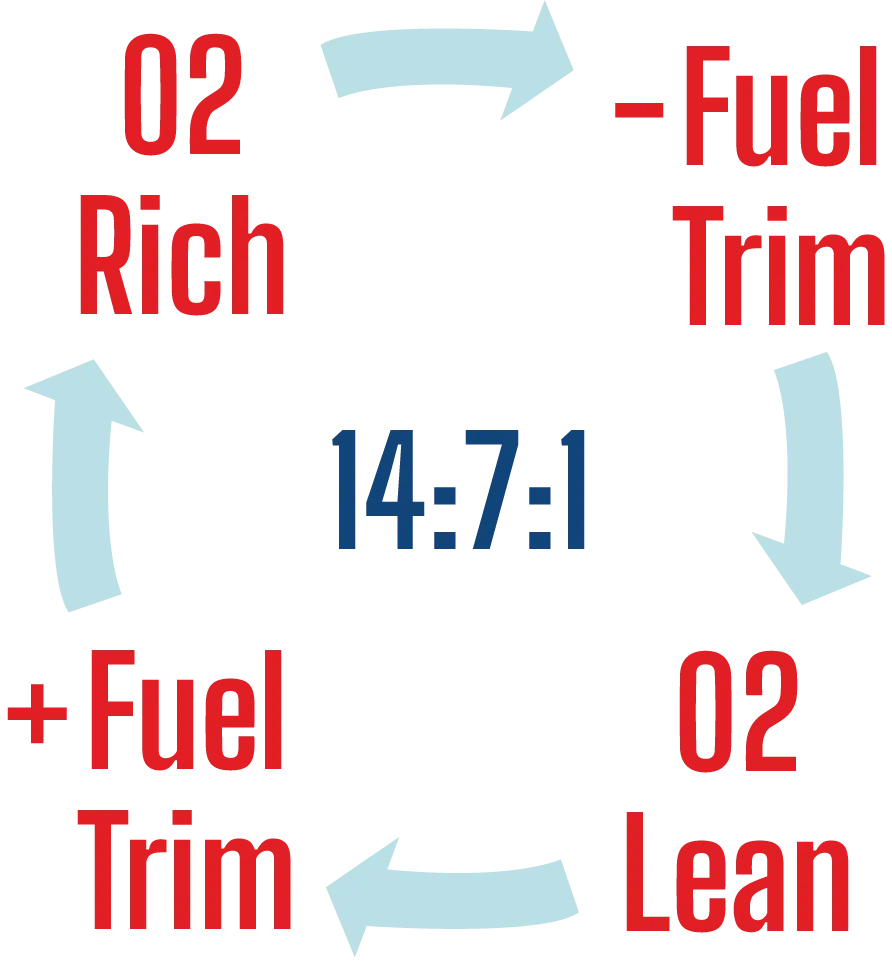Stoichiometric is the biggest, fanciest word I know. The definition for stoichiometric is having the exact proportions for a particular chemical reaction. I think the key word is “exact.”
Stoichiometric ratio, or better known as “stoich” for short, is the exact ratio between air and fuel at which complete combustion takes place. The stoichiometric mixture for a gasoline engine is the perfect ratio of air to fuel (A/F) that burns all fuel with no excess air. For gasoline fuel, the stoichiometric air–fuel mixture is about 14.7 to 1. So, stoichiometric is a big and fancy word that means “the perfect A/F ratio.”
In the early 80s, GM® came out with computer-controlled carburetors, C3 for short. From then on, it was an oxygen sensor, O2 sensor or O2S for short.
Conventional O2S, Zirconia, operate in a very narrow A/F ratio. Both types, non-heated O2S and the heated O2S, produce between .1 and 1.0 volts. When the A/F ratio is only slightly leaner than 14.7, the voltage signal to the powertrain control module (PCM) drops close to zero. When it is slightly rich, it rises close to 1.0 volt. The PCM does not know how lean or how rich, just that it is. This creates a cycle of lean signal = rich command, rich signal = lean command.
Oxygen sensor testing is watching the voltage signal from the O2S to the PCM on a lab-scope. We see that continuous cycle once the sensor is warmed up. If you look up how to test oxygen sensors, you will probably see the question about testing the O2 sensor with a multimeter. The meter will show voltage capabilities, lean to rich, but will do very little for testing the reaction time of a sensor. Also, this type of sensor is considered narrow band.

I had mentioned earlier that the sensor needed to warm up. In fact, it needs to be 600 degrees before it will function at all. Hence, the heated O2S or HO2S is more efficient than relying solely on the exhaust.
There are two main types of lean air fuel ratio sensors (LAF sensors). These are wide band sensors and are far more efficient. Wideband sensors are built for pin-point accuracy. The first consists of two zirconia elements in one sensor. The PCM trieds to maintain 450 mv in both cells. Testing is done by measuring voltage difference between sensor ground and sensor signal cell 2. Shown below is a typical, normal 5-wire LAF sensor voltage pattern while snapping the throttle in closed loop.

The second type of LAF sensor uses a ceramic element made of titania which varies resistance according to A/F ratio. This sensor can measure O2 content at a much wider operating range. Shown below is a typical 4-wire LAF sensor resistance pattern, snapping the throttle in closed loop.

The post-cat (downstream from the catalytic converter (cat), O2S is used to verify the efficiency of the cat. The oxygen content of exhaust gases leaving the cat will cause significantly less fluctuation in the post-cat sensor than the pre-cat sensor, (upstream from the cat).
The PCM will compare pre- and post-O2S switch rates to determine if the cat is functioning properly. A normal operating post-cat should show a relatively flat output, as shown below.

One more thing to cover is fuel trims in relationship to O2S and A/F ratio sensors.
Fuel trim is the adjustment the PCM makes to maintain a balanced A/F ratio. If the O2S reads rich, the PCM reduces fuel to lean it out. The fuel trim reading on the scan tool will show a negative number to represent subtracting fuel. If the O2S reads lean, the PCM adds fuel to richen the ratio. The fuel trim reading will have a plus sign to represent adding fuel.

The epic quest for the perfect A/F ratio continues today. It’s true the industry is so much closer year after year to achieving that consistent stoichiometric ratio. If I had to put a name on where we are in this quest, I would say we have achieved maintaining a well-balanced ratio.
To see how to perform an air/fuel ration test using a Snap-on Diagnostic tool, take a look at this quick tip